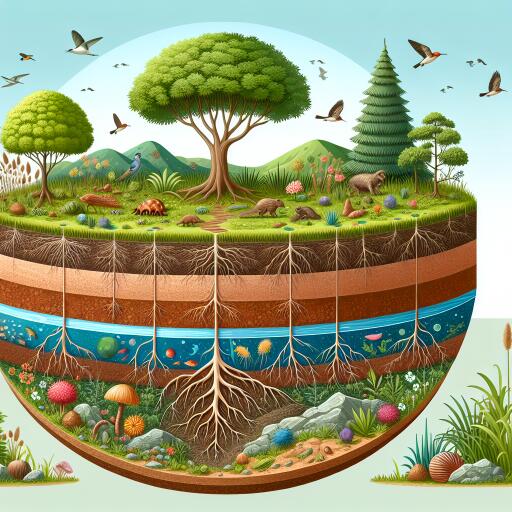
Exploring the Hidden Lifeblood of Ecosystems: The Critical Role of Groundwater
Deep below the earth’s surface, unseen bodies of water play a critical role in the survival and flourishing of diverse ecosystems. Known as groundwater, this hidden resource acts as a critical lifeline during periods of drought, maintaining the vitality of ecosystems across the globe.
However, the alarming rate at which climate change and human activity are depleting these underground reserves has sparked a growing concern. This urgency has led to groundbreaking research aimed at shedding light on these vital ecosystems, particularly in dry regions where their existence is most precarious.
A collaborative international effort involving researchers from renowned institutions worldwide has embarked on an ambitious project to map out these crucial groundwater-dependent ecosystems. Their findings revealed a disconcerting reality: over half of these ecosystems are located in areas already experiencing significant groundwater depletion, and only a fraction benefits from any form of protection.
This extensive study not only identifies the locations of these ecosystems but also examines the interplay between human settlements and these natural habitats. The insights gained are crucial for the development of proactive conservation strategies to safeguard these ecosystems.
Ecosystems that rely on groundwater are incredibly diverse, ranging from serene desert springs and lush mountain meadows to vibrant coastal wetlands and dense forests. These areas are biodiversity hubs, hosting an array of plant and animal species essential for ecological stability and health.
Yet, the very existence of these ecosystems is under threat from the relentless pressures of climate change coupled with unsustainable human exploitation. These pressures disrupt the delicate ecological balance, putting these vital natural resources at risk.
The research initiative, initially inspired by the data needs of conservation efforts, has made significant strides in overcoming the challenges posed by the lack of comprehensive global data on groundwater-dependent ecosystems. By harnessing advanced technologies, such as machine learning and cloud computing, the team has developed a model capable of mapping these ecosystems with remarkable accuracy.
This model, trained with data from NASA’s Landsat satellite, represents a leap forward in our understanding of how these ecosystems function and their resilience to environmental stressors. The researchers’ analysis showed that ecosystems supported by groundwater maintain their lushness even in dry conditions — a testament to their importance in maintaining ecological balance.
The generated map, covering the period between 2015 and 2020, is a significant tool for conservationists and policymakers. It provides invaluable insights into where these ecosystems are located and the threats they face, guiding efforts to preserve them.
Interestingly, the map highlights the broader distribution and better preservation of groundwater-dependent ecosystems in regions like Central Asia, the Sahel in Africa, and South America. This contrasts sharply with the depletion observed in North America and Australia, where extensive groundwater pumping and agriculture significantly impact these ecosystems.
The study emphasizes the critical need for sustainable groundwater management, pointing out that even protected areas are vulnerable if groundwater is extracted unsustainably nearby. It calls for stricter regulations and policies to curb groundwater depletion, underscoring the interconnectedness of groundwater reserves and ecosystem health.
To safeguard these vital ecosystems and fulfill global biodiversity and climate objectives, it’s imperative to recognize and act upon the fundamental relationship between groundwater and the myriad of life forms it sustains.
Effective conservation measures and sustainable management policies are paramount to ensuring the longevity and health of these indispensable natural resources.





Leave a Reply